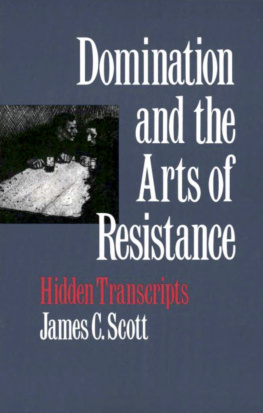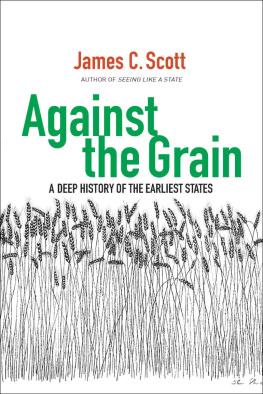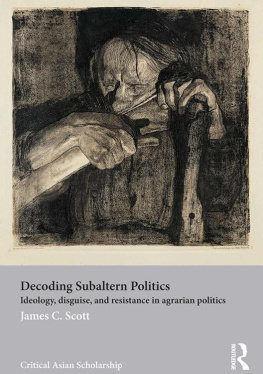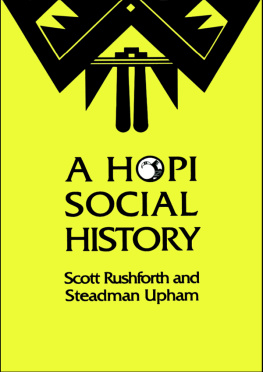James C. Scott - Domination and the Arts of Resistance: Hidden Transcripts
Here you can read online James C. Scott - Domination and the Arts of Resistance: Hidden Transcripts full text of the book (entire story) in english for free. Download pdf and epub, get meaning, cover and reviews about this ebook. year: 1990, publisher: Yale University Press, genre: Romance novel. Description of the work, (preface) as well as reviews are available. Best literature library LitArk.com created for fans of good reading and offers a wide selection of genres:
Romance novel
Science fiction
Adventure
Detective
Science
History
Home and family
Prose
Art
Politics
Computer
Non-fiction
Religion
Business
Children
Humor
Choose a favorite category and find really read worthwhile books. Enjoy immersion in the world of imagination, feel the emotions of the characters or learn something new for yourself, make an fascinating discovery.
- Book:Domination and the Arts of Resistance: Hidden Transcripts
- Author:
- Publisher:Yale University Press
- Genre:
- Year:1990
- Rating:4 / 5
- Favourites:Add to favourites
- Your mark:
- 80
- 1
- 2
- 3
- 4
- 5
Domination and the Arts of Resistance: Hidden Transcripts: summary, description and annotation
We offer to read an annotation, description, summary or preface (depends on what the author of the book "Domination and the Arts of Resistance: Hidden Transcripts" wrote himself). If you haven't found the necessary information about the book — write in the comments, we will try to find it.
Domination and the Arts of Resistance: Hidden Transcripts — read online for free the complete book (whole text) full work
Below is the text of the book, divided by pages. System saving the place of the last page read, allows you to conveniently read the book "Domination and the Arts of Resistance: Hidden Transcripts" online for free, without having to search again every time where you left off. Put a bookmark, and you can go to the page where you finished reading at any time.
Font size:
Interval:
Bookmark:
Domination and the Arts of Resistance
For Moorestown Friends' School
Domination and the Arts of Resistance: Hidden Transcripts
by James C. Scott
Yale University Press
isbn10 | asin
ISBN13: 9780300056693
eISBN13: 9780585377513
Subject: Passive resistance, Power (Social sciences), Dominance (Psychology), Interpersonal relations, Social groups.
Publication date: 1990
lcc: HM278.S37 1990eb
ddc: 303.6/1
Copyright 1990 by Yale University.
All rights reserved.
Designed by James F. Johnson
Set in Ehrhardt Roman type by The Composing Room of Michigan, Inc.
Printed in the United States of America by Edwards Brothers Inc., Ann Arbor, Michigan.
Library of Congress Cataloging-in-Publication Data
Scott, James C.
Domination and the arts of resistance: hidden transcripts / James C. Scott
ISBN 0-300-04705-3 (cloth)
0-300-05669-9 (pbk.)
1. Passive resistance. 2. Power (Social sciences) 3. Dominance (Psychology) 4. Interpersonal relations. 5. Social groups. I. Title.
HM278.S37 1990
303.6'1dc20
CIP
A catalogue record for this book is available from the British Library.
When the great lord passes the wise peasant bows deeply and silently farts.
ETHIOPIAN PROVERB
Society is a very mysterious animal with many faces and hidden potentialities, and... it's extremely shortsighted to believe that the face society happens to be presenting to you at a given moment is its only true face. None of us knows all the potentialities that slumber in the spirit of the population.
VCLAV HAVEL, May 31, 1990
The idea behind this book developed as a result of my persistent and rather slow-witted efforts to make sense of class relations in a Malay village. I was hearing divergent accounts of land transactions, wage rates, social reputations, and technological change. By itself, this was not so surprising inasmuch as different villagers had conflicting interests. More troubling was the fact that the same villagers were occasionally contradicting themselves! It was some time before it dawned on me that the contradictions arose especially, but not uniquely, among the poorer and most economically dependent villagers. The dependency was as important as the poverty, since there were several fairly autonomous poor whose expressed opinions were both consistent and independent.
The contradictions, moreover, had a kind of situational logic to them. When I confined the issue to class relations aloneone of many issuesit seemed that the poor sang one tune when they were in the presence of the rich and another tune when they were among the poor. The rich too spoke one way to the poor and another among themselves. These were the grossest distinctions; many finer distinctions were discernible depending on the exact composition of the group talking and, of course, the issue in question. Soon I found myself using this social logic to seek out or create settings in which I could check one discourse against another and, so to speak, triangulate my way into unexplored territory. The method work well enough for my limited purposes, and the results appeared in Weapons of the Weak: Everyday Forms of Peasant Resistance (Yale University Press, 1985), especially pp. 28489.
Once attuned more closely to how power relations affected discourse among Malays , it was not long before I noticed how I measured my own words before those who had power over me in some significant way. And I observed that when I had to choke back responses that would not have been prudent, I often found someone to whom I could voice my unspoken thoughts. There seemed to be a nearly physical pressure behind this repressed speech. On those rare occasions on which my anger or indignation had overcome my discretion, I experienced a sense of elation despite the danger of retaliation. Only then did I fully appreciate why I might not be able to take the public conduct of those over whom I had power at face value.
I can claim absolutely no originality for these observations about power relations and discourse. They are part and parcel of the daily folk wisdom of millions who spend most of their waking hours in power-laden situations in which a misplaced gesture or a misspoken word can have terrible consequences. What I have tried to do here is to pursue this idea more systematically, not to say doggedly, to see what it can teach us about power, hegemony, resistance, and subordination.
My working assumption in organizing the book was that the most severe conditions of powerlessness and dependency would be diagnostic. Much of the evidence here, then, is drawn from studies of slavery, serfdom, and caste subordination on the premise that the relationship of discourse to power would be most sharply etched where the divergence between what I call the public transcript and the hidden transcripts was greatest. Where it seemed suggestive I have also brought in evidence from patriarchal domination, colonialism, racism, and even from total institutions such as jails and prisoner of war camps.
This is not a close, textural, contingent, and historically grounded analysis in the way that my study of a small Malay village necessarily was. In its eclectic and schematic way it violates many of the canons of postmodernist work. What it shares with postmodernism is the conviction that there is no social location or analytical position from which the truth value of a text or discourse may be judged. While I do believe that close contextual work is the lifeblood of theory, I also believe there is something useful to be said across cultures and historical epochs when our focus is narrowed by structural similarities.
The analytical strategy pursued here thus begins with the premise that structurally similar forms of domination will bear a family resemblance to one another. These similarities in the cases of slavery, serfdom, and caste subordination are fairly straightforward. Each represents an institutionalized arrangement for appropriating labor, goods, and services from a subordinate population. As a formal matter, subordinate groups in these forms of domination have no political or civil rights, and their status is fixed by birth. Social mobility, in principle if not in practice, is precluded. The ideologies justifying domination of this kind include formal assumptions about inferiority and superiority which, in turn, find expression in certain rituals or etiquette regulating public contact between strata. Despite a degree of institutionalization, relations between the master and slave, the landlord and the serf, the highcaste Hindu and untouchable are forms of personal rule providing great latitude for arbitrary and capricious behavior by the superior. An element of personal terror invariably infuses these relationsa terror that may take the form of arbitrary beatings, sexual brutality, insults, and public humiliations. A particular slave, for example, may be lucky enough to escape such treatment but the sure knowledge that it could happen to her pervades the entire relationship. Finally, subordinates in such large-scale structures of domination nevertheless have a fairly extensive social existence outside the immediate control of the dominant. It is in such sequestered settings where, in principle, a shared critique of domination may develop.
The structural kinship just described is analytically central to the kind of argument I hope to make. I most certainly do not want to claim that slaves, serfs, untouchables, the colonized, and subjugated races share immutable characteristics. Essentialist claims of that kind are untenable. What I do wish to assert, however, is that to the degree structures of domination can be demonstrated to operate in comparable ways, they will, other things equal, elicit reactions and patterns of resistance that are also broadly comparable. Thus, slaves and serfs ordinarily dare not contest the terms of their subordination openly. Behind the scenes, though, they are likely to create and defend a social space in which offstage dissent to the official transcript of power relations may be voiced. The specific forms (for example, linguistic disguises, ritual codes, taverns, fairs, the hush-arbors of slave religion) this social space takes or the specific content of its dissent (for example, hopes of a returning prophet, ritual aggression via witchcraft, celebration of bandit heroes and resistance martyrs) are as unique as the particular culture and history of the actors in question require. In the interest of delineating some broad patterns I deliberately overlook the great particularity of each and every form of subordinationthe differences, say, between Caribbean and North American slavery, between French serfdom in the seventeenth century and in the mid-eighteenth century, between Russian serfdom and French serfdom, between regions and so on. The ultimate value of the broad patterns I sketch here could be established only by embedding them firmly in settings that are historically grounded and culturally specific.
Next pageFont size:
Interval:
Bookmark:
Similar books «Domination and the Arts of Resistance: Hidden Transcripts»
Look at similar books to Domination and the Arts of Resistance: Hidden Transcripts. We have selected literature similar in name and meaning in the hope of providing readers with more options to find new, interesting, not yet read works.
Discussion, reviews of the book Domination and the Arts of Resistance: Hidden Transcripts and just readers' own opinions. Leave your comments, write what you think about the work, its meaning or the main characters. Specify what exactly you liked and what you didn't like, and why you think so.











